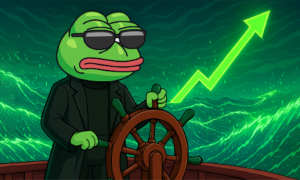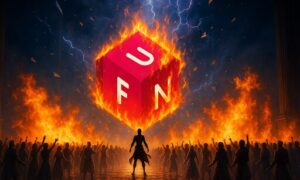Blockchain Technology Changing The Way We Game
As DeFi projects increase in value, the monthly volume of decentralized exchanges has skyrocketed from $39.5 million in January 2019 to $45.2 billion in January 2021. The implications are far beyond higher priced DeFi-based tokens, as one of the biggest benefactors of this development is most likely to be blockchain gaming. This sector is likely to introduce new forms of value for the gaming sector. DeFi offers gamers a novel method of compensation through blockchain-based tokens and other rewards, powered by decentralized mechanics.
Web Gaming Closing the Gap Between Countries
In 2020 the global web gaming market was estimated to be worth around $150 billion. A Newzoo report is forecasting that the market will surpass the $200 billion mark by 2023. This growth is in part fuelled by web gaming adopting blockchain technology. The Gaming World Championship, which is based on blockchain technology called League of Legends, was recently attended by an estimated 44 million people. This strongly points towards a new trend and market emerging in the gaming world.
It is now possible to duel with digital opponents and if one emerges victorious, a cash prize awaits, irrespective if the player lives in Europe, Asia or Africa. The amount may not mean much to a citizen of a developed nation, but to citizens of low-income countries that income can translate into a substantial sum. There are numerous variations on participation in a web game and in several of them the opportunity to win a substantial amount of money is a reality. With the application of blockchain technology the gap between countries could be potentially reduced as new payment gateways open up.
Increasing Adoption of DeFi Mechanisms
The increasing adoption of DeFi mechanisms lends a unique appeal to gamers. The lines between assets purely used in games and financial assets are blurring, creating a new type of asset class. Where in-game assets were once considered to be coins with no real value, they are now becoming real financial assets. These new in-game assets can also be used as financial instruments by gamers and outside investors, giving validity to phrase play to earn. DeFi mechanisms enable blockchain games to provide players with different ways to make gaming with their while and earn rewards. Collectable and trading games are some of the most popular genres on blockchain, partly because they allow players to buy, sell and trade unique tokens and assets. With games increasingly issuing tokens native to their platforms, developers are essentially able to construct their own economies.
NFTs Moving Beyond Collectibles and Art
Non-fungible tokens (NFTs) emerged as a significant point of contention for many who observe the blockchain space. An NFT is basically a digital token representing a unique asset, such as a piece of art or real estate. As an NFT the asset can be easily traded on blockchain technology. Famous examples of NFTs include digital collectibles from the musical artist Deadmau5. With NFT sales surging past $2.5 billion in the first half of 2021, it is expected that the technology’s use and applicability will continue to develop and increase. NFTs create an unparalleled and verifialble level of authenticity that can be easily incorporated into the daily processes of the global economy. It is possible that in the future domains, collector items and in-game items could all be potentially represented on blockchain as an NFT.
Gamers Could Earn Passive Income on Collectibles
Another distinct advantage DeFi brings to the gaming table is the ability of gamers to earn passive income on collectibles or other accumulated in-game assets. This can be done by staking these assets to liquidity pools. Agreeing to provide liquidity to the gaming ecosystem is one of the ways DeFi mechanics can reward gamers beyond traditional methods. Ethereum-based games have become a popular use case for DeFi due to their built-in economies and incentive models. Another example can be found in The Sandbox. Prior to launching its game, The Sandbox allowed users to earn extra SAND tokens by staking assets to liquidity pools. This allowed early adopters to gain a head-start while keeping the in-game economy stable.
SwapXI taking Gaming to Paid Levels
In a recent press release, SwapXI announced itself as the world’s first DeFi offering that aims to take gaming to paid levels. It uses blockchain technology to deliver value for streamers, gamers, advertisers and viewers in an integrated ecosystem. The platform is designed and developed by gamers for gamers and is released on the Tron Network, making it token compatible with different exchanges, wallets as well as third-party services.
DeFi Next Steps
As a form of finance that removes central financial intermediaries, DeFi is expected to see dramatic growth over the next five years. Celebrity investor Mark Cuban, who is known in the blockchain industry for his advocation of NFTs, suggested that banks should be concerned over DeFi’s rising popularity. While the technology may still be in the early stages, DeFi contracts have amounted to a combined value of over $41 billion in March of 2021, lending credence to Mark Cuban’s foresight.



































